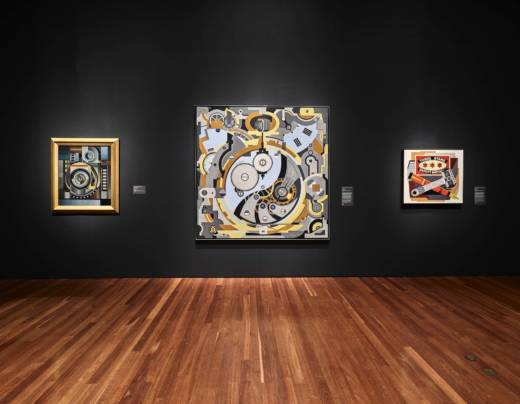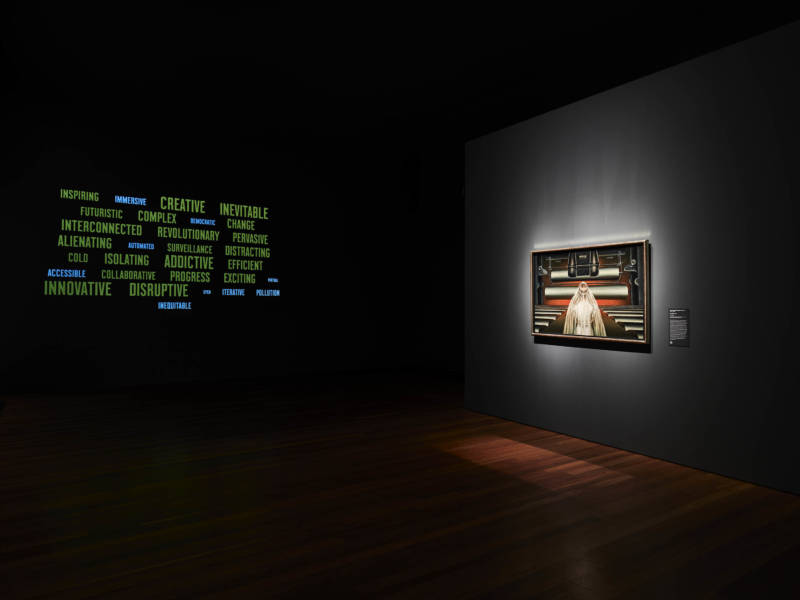You’re going to want to block out a few hours to see Cult of the Machine at the de Young Museum.
The exhibit is a comprehensive exploration of the Precisionists, a group of U.S. artists enthralled by technology during the period between the two World Wars. For the show, the de Young’s ground floor has been packed with more than 100 paintings and photographs from the 1910s through the ’30s.
There are also examples of commercial design and film clips, like the factory scene from Charlie Chaplin’s 1936 film Modern Times. Though truth be told, that film is all about ambivalence towards technology.
Associate Curator of American Art Emma Acker expects you to compare past and present while you walk through museum. “In the Precisionist era, everyone’s looking up. They’re looking skyward, whereas now we’re looking down at our phones and our devices,” she says, laughing.




